Do salmon feed in freshwater?
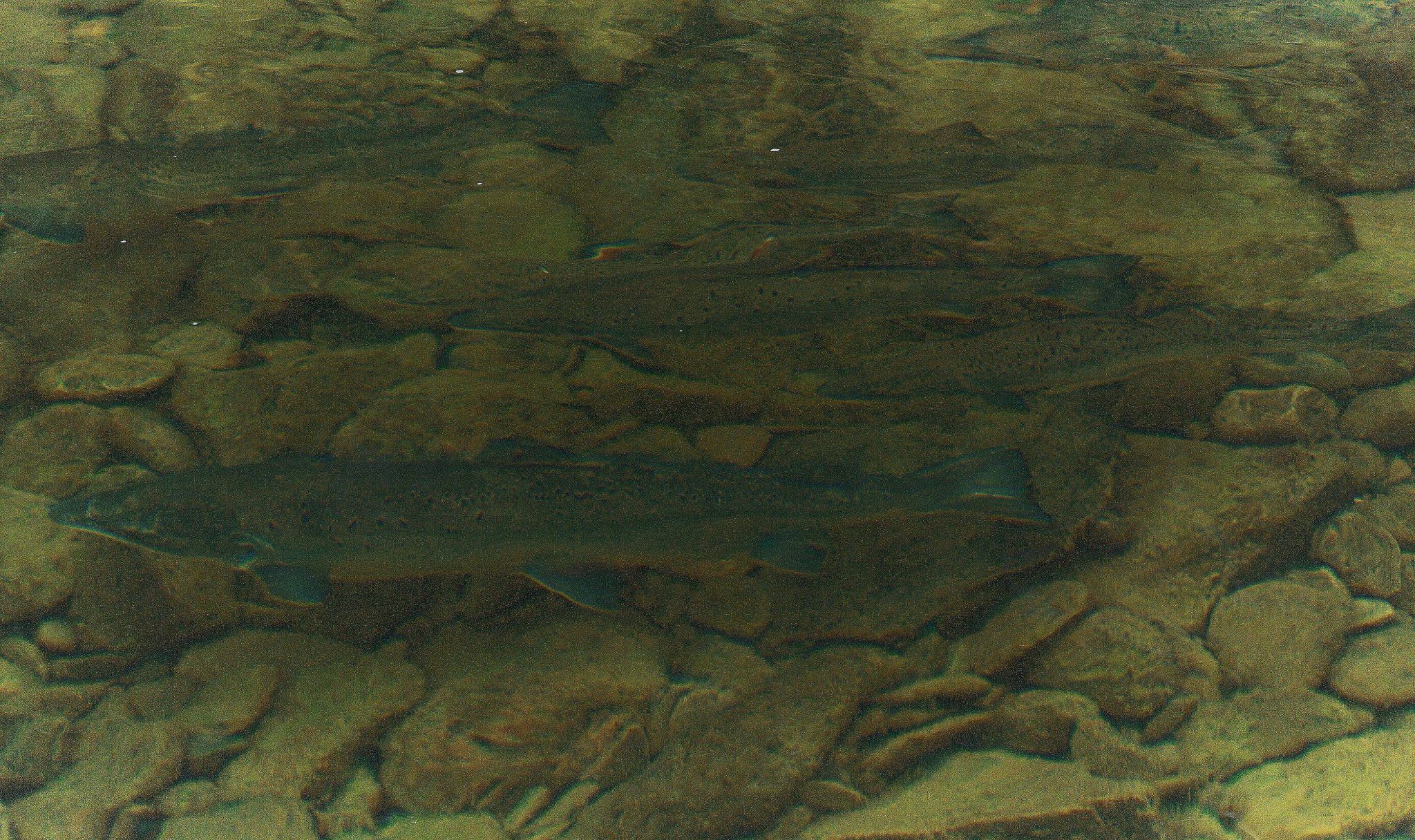
Do salmon feed in freshwater – or don’t they ? Most anglers you know will probably say no – But modern science tells us some of them actually do eat food …occasionally
New science shows examples of eating behaviour among up to 40 % of the adult salmon in the region of Northern Norway
Salmon feed in freshwater
Even though It is generally known that adult salmon will leave behind their greedy way of life and go into a state of anorexia when entering freshwater – It is a myth that the salmon won’t eat while staying in freshwater – The angler fishing with a worm will also tell you otherwise as the salmon now and then will swallow worm and hook.
New science shows examples of eating behaviour among up to 40 % of the adult salmon in Northern Norway. In some rivers, the salmon diet includes land and water insects.
Here: Salmon feed in freshwater. Both land and river Insects were found in the stomach of this 4-kilo sea lice salmon caught In the very North of Norway
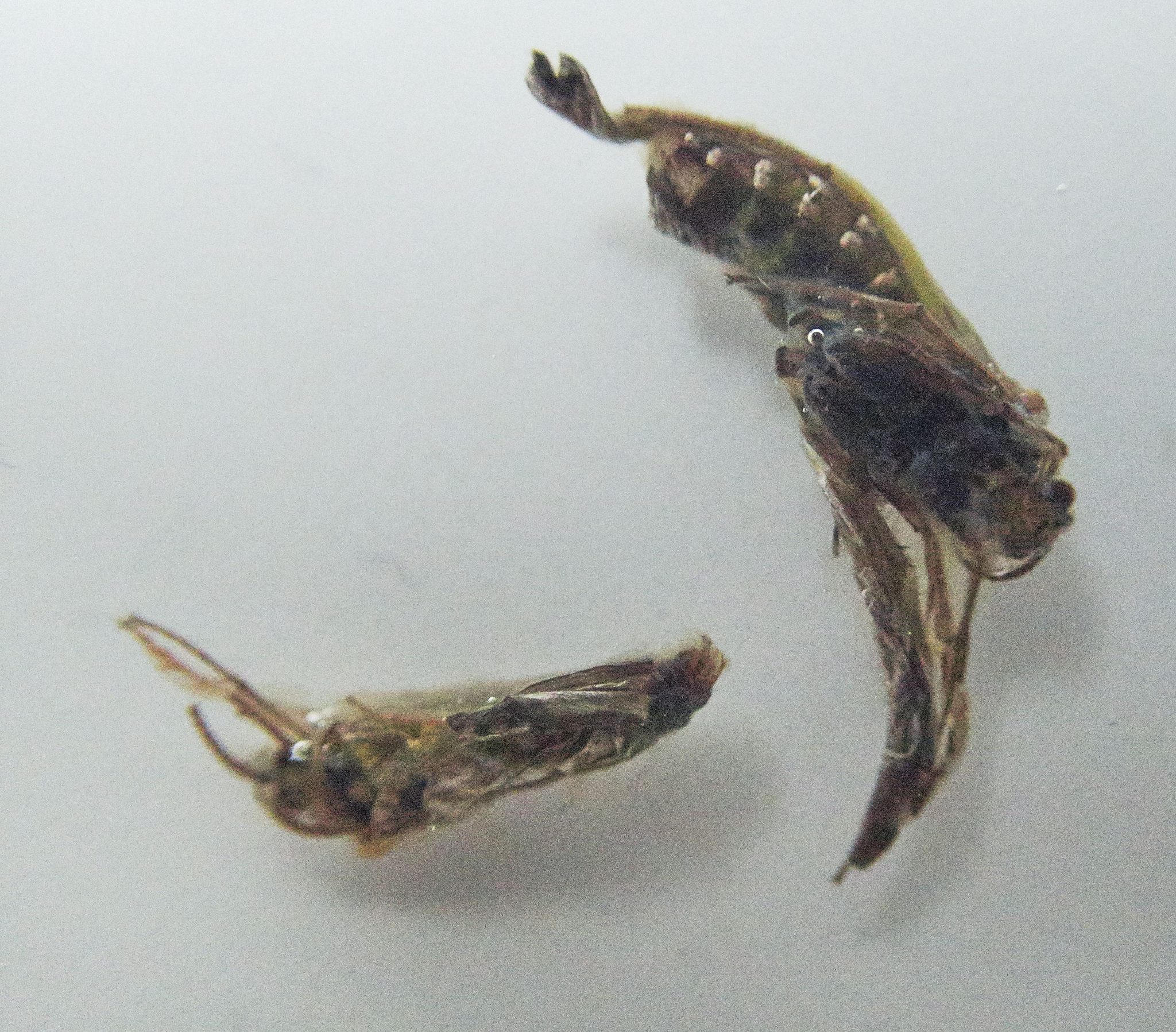
We as anglers rely strongly on the salmon’s ability to remember the idea of eating – as the salmon most of us try to catch haven’t entered the river to feed but to spawn. But we catch them on a regular basis and most of the time we use gadgets that is closely association with the food salmon know so well.
Salmon feeding behaviour and flies
It would just be too easy to accredit the success of particular flies or fishing methods like riffling hitch, dry fly fishing, or shrimp flies – to insect and sea life as we see it today – Hunting skills and levels of curiosity with various species of fish could very well have been formed 10´s of millions of years ago when the insect and animal life might have looked different from today.
It is well-known that a prawn salmon fly pattern like the General Practitioner fly works much better in some rivers than others. The British salmon, and in particular the Irish salmon, seems to be more interested in shrimp flies like the Pot Bellied Pig seen in the photo – more so than salmon in regions of Scandinavia … Saying this, I recognize that it is hard to say if most of our sub-flies in fact, is interpreted by salmon as prawns and shrimps. We, 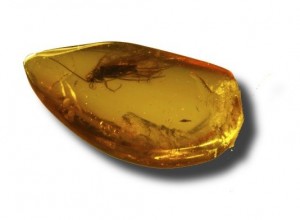
Right: A small caddisfly locked in time and space in this piece of amber from the Eocene epoch, lasting from about 56 to 34 million years ago – The caddisfly insect is found fossilized in rock dating even further back – to the Triassic about 250 to 200 million years ago – It could be neat to believe that the success with the Riffling Hitch techniques was linked with the life and behaviour of the caddisfly.
Salmon feeding on the surface
Why do the salmon take a big floating Bomber? – You will ask yourself this question now and then when you fish salmon on a dry fly. The short answer is; there is no apparent reason, but the truth of the matter is; that the talent to find and capture food is interlinked with the Atlantic salmon’s success across the Northern Hemisphere – and finding food on the surface is an axis point in this success of the salmon parr´s life in the river.
As soon as insects start flying, the salmon parr has attention pointed upwards…It is, in fact, these surface hunting abilities that we tap into when we try to catch the salmon on our salmon dry flies.
Above: The Monster Tube Caddis. A caricature of the caddisfly from the limnephilidae family it was made to portray. Often it is not exact copies of prey that get the salmon going – sometimes, it needs only to be a minor detail or a rough design that triggers a reaction.
 A big Bomber dry fly is not a problem.
A big Bomber dry fly is not a problem.
With many insects on the water, adult salmon in some rivers may part-take in the feast alongside its trout cousin – and rise to the stream of hatching insects as frequently as the trout.
Such rare occasions could call upon a fly that would match the hatch, so to speak – But regularly, it is rarely necessary to match the hatch as salmon will respond well to flies that look like big caricatures and not imitations of the insect that it is meant to portrait.
The main characteristic that we (the angler) want to feature in our dry flies is the element of entrapment – We want to build a fly that will rest on the surface, showing little underwater.
Some of the insects salmon parr feed on
Above: an all-important terrestrial in Northern Scandinavia is the moth of the Geometridae family.
A large group of insects that now and then comes in contact with the water and salmon.
Salmon parr will follow this insect closely when it flutters across the river – and if given a chance, they will grab it, jumping clear out of the water.
Personally, I believe that it is the bountifulness of these insects that makes the white and grey White Bomber pattern particularly good in some river systems in the far north of Norway.
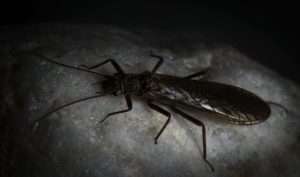
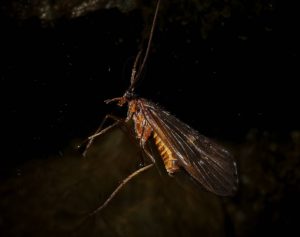
The riverbank can see these remarkable insects in the thousands during summer. Members of the caddisfly family are also some of the earliest and last flying insects to be found at the river bank.
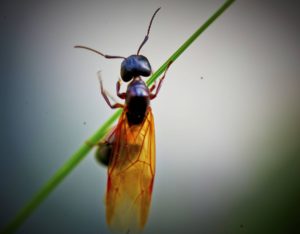
This fellow measures more than 1,3 centimetres. During summer months, swarms of these resilient insects will leave their ants to find new territory. Thousands of them will end up in the river system – where salmon parr, trout and adult salmon will find them. Yet another little bug worthwhile having represented in the fly box.
What do salmon eat at sea ?
 Salmon feeding at high seas
Salmon feeding at high seas
Science will tell us that the Atlantic salmon is a highly skilled and opportunistic predator that will feed on a broader selection of animals – ranging from tiny crustaceans, shrimps, squid, worms and fish – It will hunt in both deep and relatively shallow water in very different lighting.
There is no doubt that the appearance and behaviour of these many animals that salmon hunt for – is somewhat mirrored in the salmon flies we use. Was it a detail on the fly? – Was it the fly as a whole? – that tricked the salmon into biting? – We don’t know yet
Salmon feeding at high seas
Fish & shrimp was on the menu
Left: Atlantic Salmon love shrimp flies. Studies show that a substantial percentage of their prey is shrimp. Here the spellbinding Frances Fly – Scrimp and prawn flies like the General Practitioner and the Frances Fly can have an overwhelming effect on Atlantic salmon – But not all salmon is taken by the charms of the shrimp.
Revealing studies about salmon feeding at sea
Interesting studies into salmon feeding at high seas in the North-east Atlantic by; biologists Jacobsen, J. A., and Hansen, L. P. show that shrimps accounted for 95% of the food in number but only about 30% by weight.
By weight, 66% of the stomach content was fish, particularly mesopelagic fish. Some larger pelagic fish such as herring, blue whiting, and mackerel were also part of the dies.
Fish and crustacean prey accounted for 96% of the weight of all prey eaten by salmon, but the report also mentions a small percentage of birds and bird remains also being part of the salmon stomach content!!
Feeding on the way to the river
Fish is the bulk part of the salmon diet, and fresh salmon or trout steaming in from the feeding grounds at high seas might even have fresh food in their stomach – prey they could have caught on their way to the estuary or river mouth.
These salmon are as aggressive as they come, some with a crisp memory of their greedy life at sea and eager to hit your salmon fly – These stupid silver ones is the fish most anglers will come to know and so often tie flies to catch.
Above: close to the river mouth, some Atlantic salmon may hunt. This freshly caught July fish had partly dissolved herring in the stomach.
Above: Freshly caught grills shortly after the tide with a sand eel in its stomach. When the season progress – river levels drop over summer…Salmon might stay for a longer duration in the river mouth and estuary… Not feeding and with empty guts.
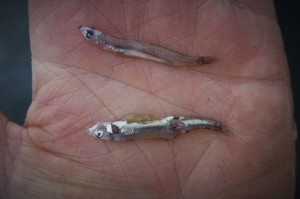 Above: yet another example on this topic: Two well-preserved juvenile herrings found in the stomach of Atlantic salmon – caught in the lower part of the river only a few hours into the tide. Fish that have fed non-stop until entering the river is aggressive and easy to catch.
Above: yet another example on this topic: Two well-preserved juvenile herrings found in the stomach of Atlantic salmon – caught in the lower part of the river only a few hours into the tide. Fish that have fed non-stop until entering the river is aggressive and easy to catch.
 Fresh salmon frequently hit green and blue.
Fresh salmon frequently hit green and blue.
Science tells us that the fresh silver salmon returning to the river has resources within the structure of its eyes to see the light with short wavelengths like green and bluish colours… something that it has used to detect prey and enemies in the vast water columns at high seas.
Right: Flies like this big Sunray Shadow have an excellent effect on fresh running salmon from the high seas.
During the season, the salmon’s ability to focus on light with short wavelengths will change progressively to a new capability.
Read about flies for fresh, aggressive salmon on our pages:
Read about types of salmon found in the river system

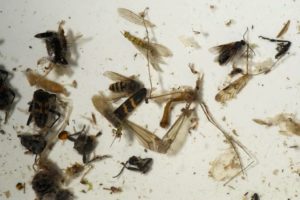
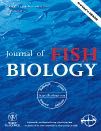 A biological survey by biologist Mr M. Johanesen from the University of Tromsø, Norway
A biological survey by biologist Mr M. Johanesen from the University of Tromsø, Norway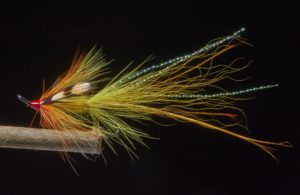
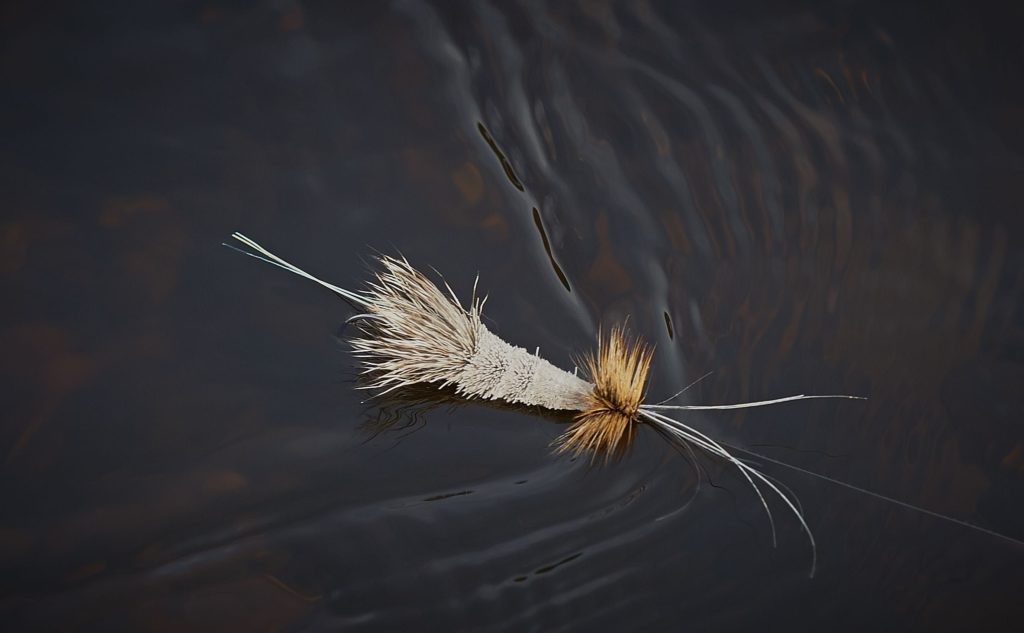
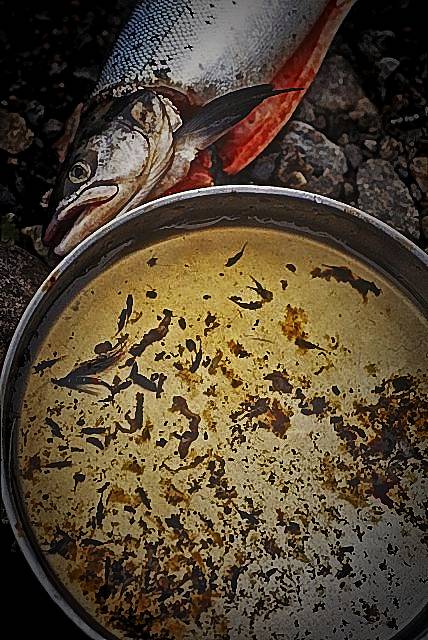 A big Bomber dry fly is not a problem.
A big Bomber dry fly is not a problem.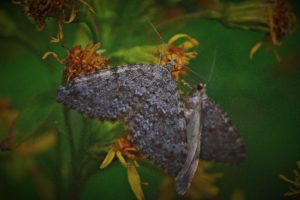
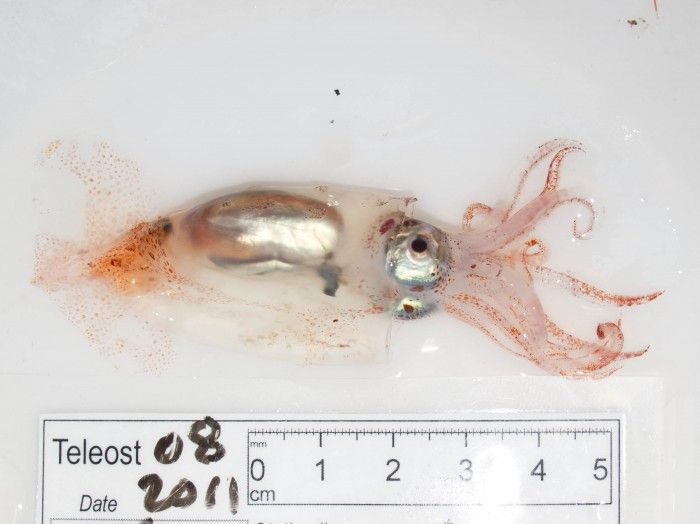 Salmon feeding at high seas
Salmon feeding at high seas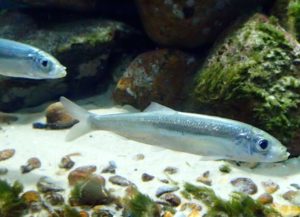 See the amazing photos of the animals Atlantic Salmon feed on at high seas
See the amazing photos of the animals Atlantic Salmon feed on at high seas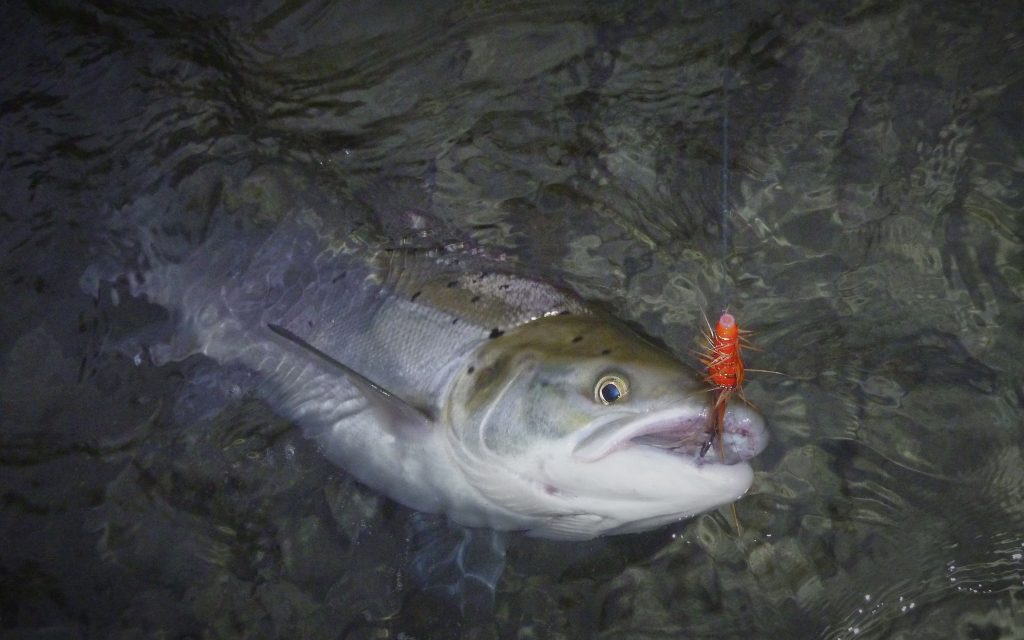
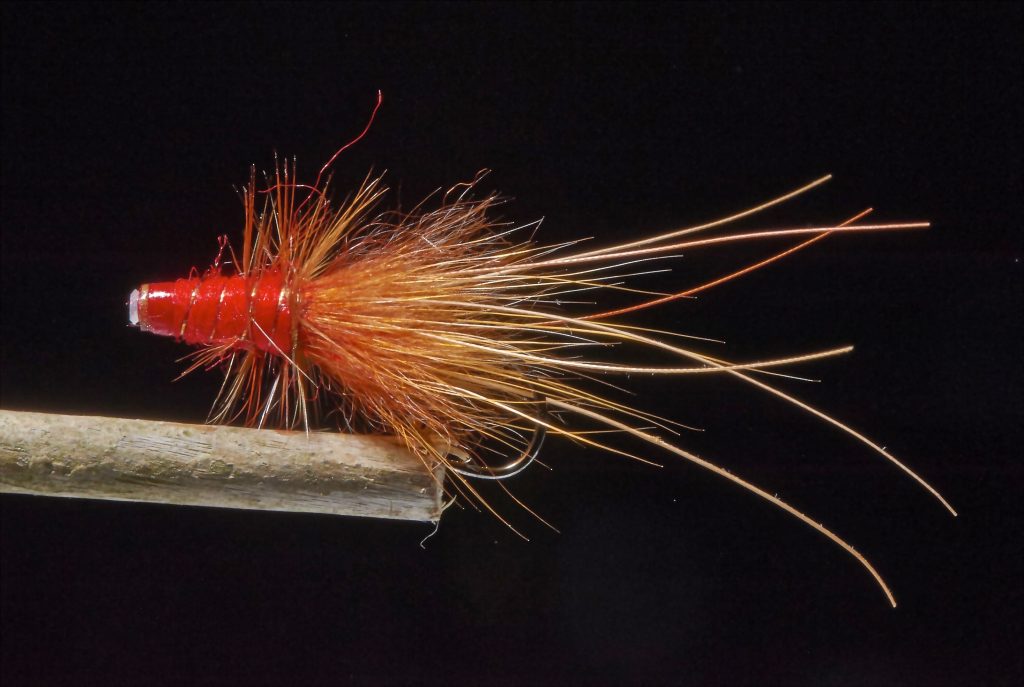
 Read the interesting
Read the interesting 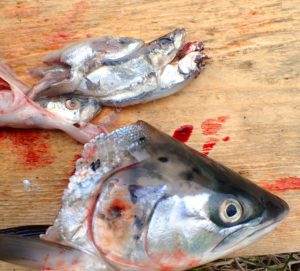
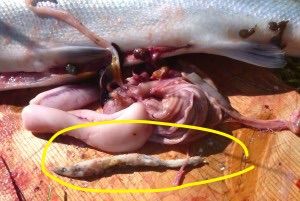
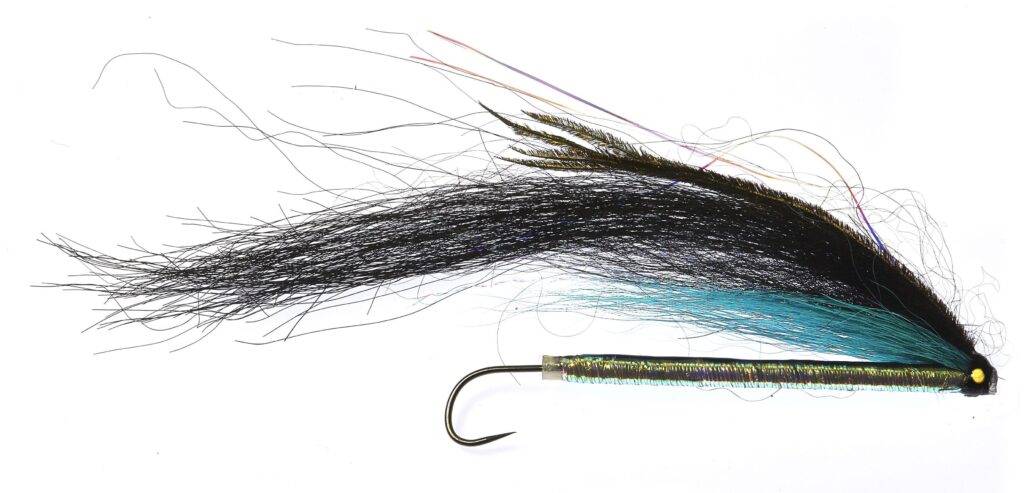 Fresh salmon frequently hit green and blue.
Fresh salmon frequently hit green and blue.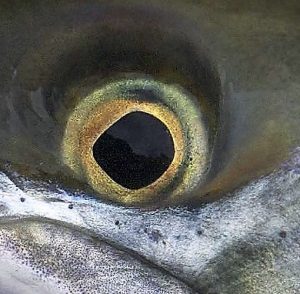 Read more about the
Read more about the 